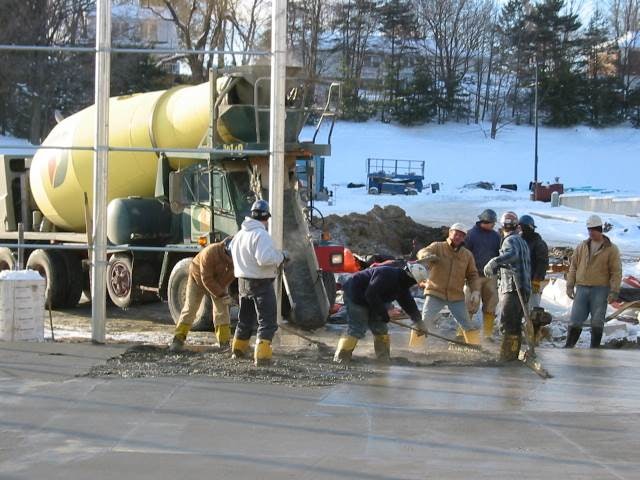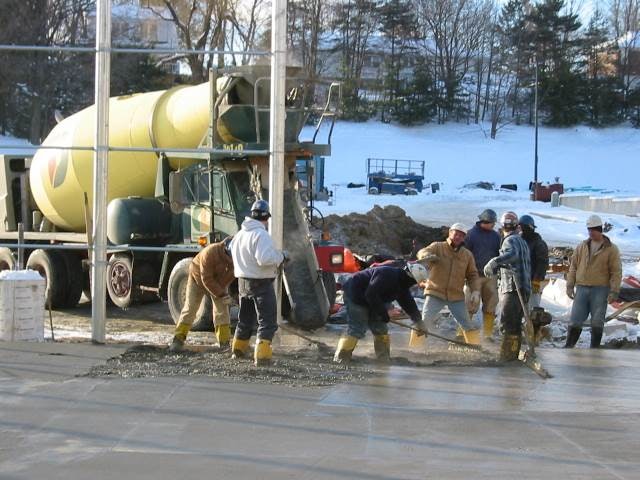Category: Concrete Materials
-

Decarbonizing Concrete: What the Contractor Can Do
In November 2025, CarbonCure Technologies was able to achieve a notable milestone for the concrete construction industry. More than 83.6 million cubic yards (or 10 million truckloads) of the CarbonCure product have been produced to date throughout its producer network. According to the company, that’s the equivalent of enough concrete to build all 30 NFL…
-

Decarbonizing Concrete: What the Contractor Can Do
In November 2025, CarbonCure Technologies was able to achieve a notable milestone for the concrete construction industry. More than 83.6 million cubic yards (or 10 million truckloads) of the CarbonCure product have been produced to date throughout its producer network. According to the company, that’s the equivalent of enough concrete to build all 30 NFL…
-

5 Cold-Weather Concreting Myths Debunked
As temperatures drop, concrete contractors face a familiar dilemma: push through winter or shut down until spring. For decades, cold weather has carried an aura of risks like delayed set times, weak early strength, increased cracking, and scaling. But the truth is that cold-weather concreting is not inherently problematic. What undermines performance isn’t the climate…
-

5 Cold Weather Concrete Myths Debunked
As temperatures drop, concrete contractors face a familiar dilemma: push through winter or shut down until spring. For decades, cold weather has carried an aura of risks like delayed set times, weak early strength, increased cracking, and scaling. But the truth is that cold-weather concreting is not inherently problematic. What undermines performance isn’t the climate…
-

5 Cold Weather Concrete Myths Debunked
As temperatures drop, concrete contractors face a familiar dilemma: push through winter or shut down until spring. For decades, cold weather has carried an aura of risks like delayed set times, weak early strength, increased cracking, and scaling. But the truth is that cold-weather concreting is not inherently problematic. What undermines performance isn’t the climate…
-

How to Integrate Pigments into On-Site Concrete Mixing
Color is no longer a specialty add-on in concrete. It has become a mainstream design feature for residential, commercial, and municipal projects alike. For contractors, that means knowing how to properly mix, dose, and finish pigmented concrete on-site is essential to delivering consistent, high-quality results. This guide outlines best practices for pigment use in field…
-

Cold-Weather Concreting: Technical Guidance for Preventing Winter Damage
As construction timelines stretch deeper into the colder months, concrete contractors are increasingly expected to deliver high-performance placements under challenging conditions. Cold weather can slow hydration, delay strength gain and significantly increase the risk of early-age concrete damage. Without proactive measures and technical know-how, cold-weather concreting can lead to compromised structural performance, costly repairs or…
-

Ecocem ACT I Ternary Blended Cement Earns ASTM C1157 Certification
It’s been said that the world places nearly a New York City amount of concrete every year. Within every cubic yard of this tonnage is the cement and the cloud of CO2 created in its production. The acceptance of cements with additional limestone and higher percentages of supplemental cementitious materials (SCMs) in the mix has…
-

How Contractors Can Strengthen Our Roads & Highways
Far more than just physical connections between cities, our nation’s road and bridge systems are the lifelines of our economy and daily life, enduring relentless loads, severe weather, and chemical assault. Despite their robust design, these structures are deteriorating at an alarming rate. According to the American Society of Civil Engineers, the average age of…

